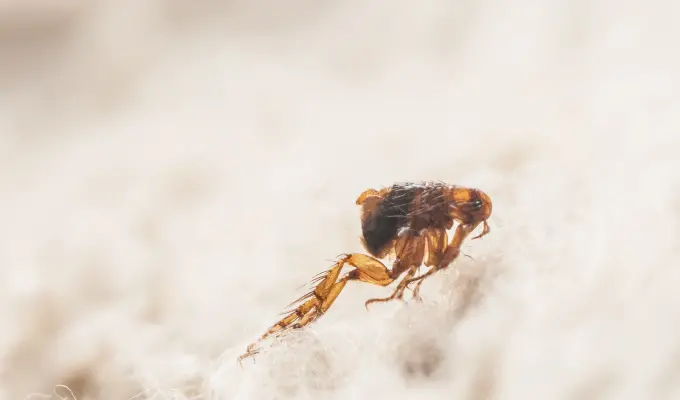Don’t let their size fool you, these microscopic menaces can turn your home or business into an uncomfortable and potentially hazardous environment. At Action Pest Control, we understand the frustration and concern that comes with a flea infestation. That’s why we’re here to offer you peace of mind and a space free of fleas.
These resilient pests are masters of hide-and-seek, making them incredibly challenging to eliminate on your own. Our team of certified flea control experts brings 79 years of experience, cutting-edge techniques, and a commitment to your satisfaction.

It can be difficult to get rid of a flea infestation without professional intervention once they infest your space. Action Pest Control exterminators will inspect your home and find entry points, along with contributing factors to what’s attracting them.
When fleas make themselves at home, it’s time to call in the pros. Our expert technicians at Action Pest Control will:
We get it — your pets are family. But sometimes, they can bring unwanted guests home. Don’t worry, though. With over 79 years of experience, Action Pest Control has perfected the art of flea elimination while keeping your pets’ well-being in mind.
Here’s what you can expect from our residential flea control service:
Fleas in a commercial setting can lead to unhappy employees, scared-off customers, and potential health code violations. At Action Pest Control, we understand the unique challenges businesses face when dealing with pest issues.
Our commercial flea control services offer:
Have questions? We are here to help. Still have questions or can’t find the answer you need? Give us a call at 877-420-0849 today!
Professional flea extermination is the most effective way to control flea infestations. The Action Pest Control team will come out and put together a flea control plan just for you.
Exterminators like Action Pest Control use safe, effective insecticides to kill fleas. We’ll also use baits and traps if the situation calls for it.
Need Pest Control Service?
Leave your information below and we’ll be in touch shortly. After hours calls will be returned the next business day.